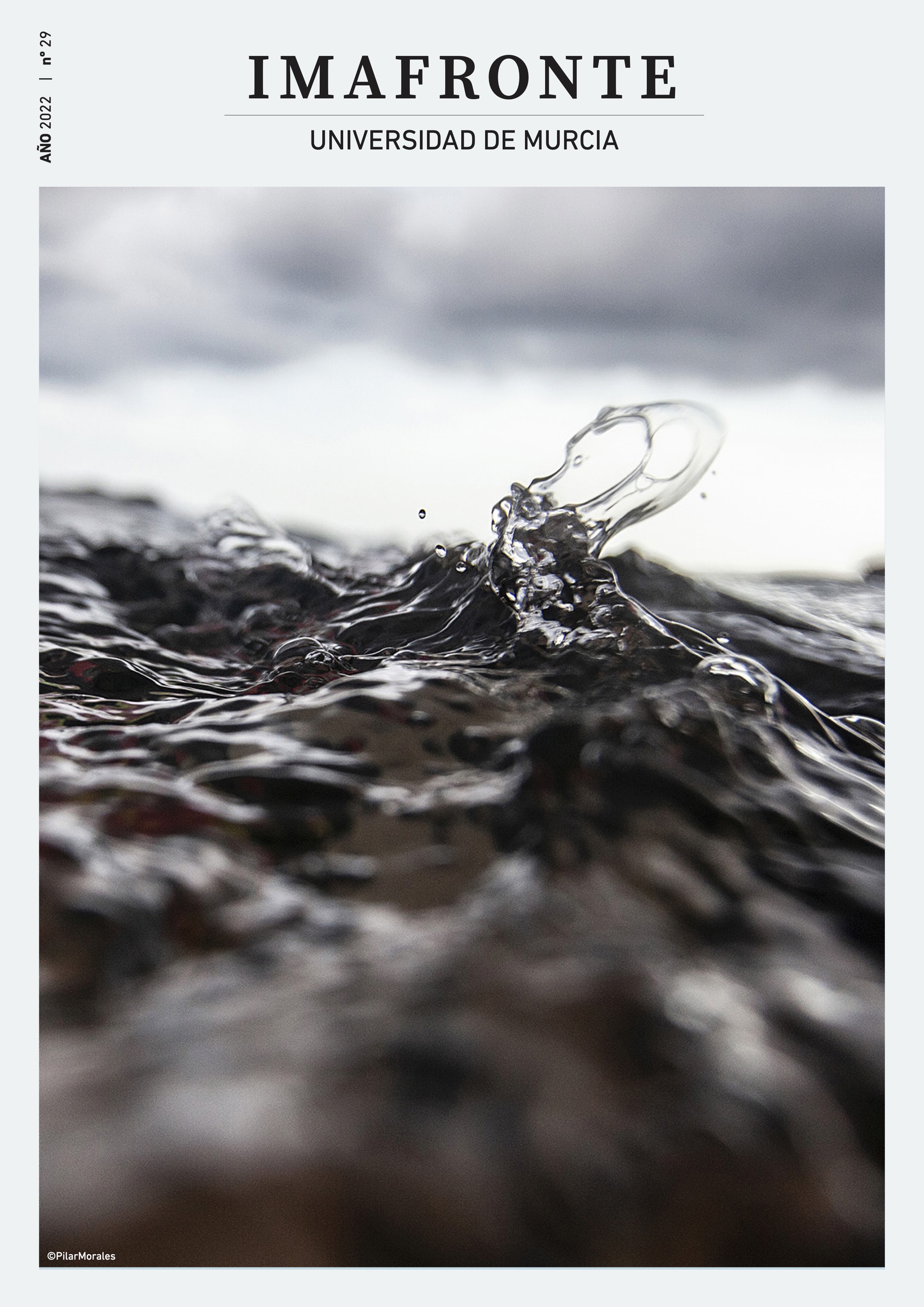The representation of female work at sea in the contemporary Asturian visual imaginary
Abstract
The aim of this paper is to tackle a comparative analysis of women in seaworks, well-depicted by sources, through the artistic approaching of contemporary Asturian imaginary. To the point, a corpus of images, that goes from the 19th century to the present, has been gathered to detect what intentions and purposes are connected to the artistic display. Not only attending to the will of the artistic mentality, but also to the socioeconomic evolution of these seaworks, these images involved varied information. The studied artworks come from disciplines such as painting, photography or advertising images.
Downloads
-
Abstract1654
-
PDF (Español (España))1098
-
EPUB (Español (España))141
References
Broullón Acuña, E. (2011). La política sexual y la segregación ocupacional en las sociedades pesqueras. En Revista Estudos Feministas, 19 (1), 73-89.
Díaz Quirós, G. (2002). Ventura Álvarez Sala. En Enciclopedia de Artistas Asturianos. Oviedo: Hércules Astur, t. I, 496-531.
Díaz Quirós, G. (2006). Asturias para el recuerdo. El campo, la mar, la industria. Oviedo: Hércules Astur.
Fandos Rodríguez, L. (2000). La mujer trabajadora en Gozón (1750-1960). Luanco: Museo Marítimo de Asturias.
Fandos Rodríguez, L. (2006). La costa y el mar de Asturias. En Asturias y la Mar. Oviedo: Editorial Prensa Asturiana y Ediciones Nobel, 655-680.
García Martínez, A. (2008). Antropología de Asturias. Oviedo: KRK ediciones.
Junquera Huergo, J. (1991). Gramática asturiana. Oviedo: Academia de la Llingua Asturiana.
Machicado Compañy, M. (1988), Terminoloxía marinera de Cimavilla. En Lletres asturianes. Boletín Oficial de l’Academia de la Llingua Asturiana, 28, 101-108.
Macías Muñoz, M.O. (2016). Las mujeres y las actividades marítimas en el País Vasco. Trabajo portuario y ámbito pesquero (1700-1950). En Itsas memoria. Revista de estudios marítimos del País Vasco, n. 8, 831-845.
Martínez García, P. (2017). Democratizando el mar con perspectiva de género. El proceso de profesionalización de las mariscadoras a pie en Galicia. En Política y Sociedad. Madrid: ediciones complutense, n. 54 (2), 377-398.
Marugán Pintos, B. (2012). La organización de las mariscadoras como agentes de transformación social, En Debate, 7, 82-106. Disponible en: http://dx.doi.org/10.5007/1980-3532.2012n7p82 [Última consulta: 13-IV-2021, 11:21].
Mier Valerón, L. (2017). Iconografías portuarias. Miradas artísticas del litoral asturiano. Oviedo: Universidad de Oviedo. Tesis doctoral inédita.
Muñoz Abeledo, L. (2012) Actividad femenina en industrias pesqueras de España y Portugal (1870-1930). En Historia Contemporánea, n. 44, 49-72.
Muñoz Abeledo, L. (2014). El trabajo infantil en la pesca e industrias de transformación de pescado en España, 1850-1936. En Documentos de Trabajo (AEHE), n. 1407, 1-39.
Ocampo Suárez-Valdés, J. (1999). Las conservas de pescado en Asturias, 1880-1930. En Actas del V Congreso de Historia Económica. Zaragoza: Universidad de Zaragoza.
Ocampo Suárez-Valdés, J. (2002). Cambio técnico e industrialización pesquera en Asturias (1880-1930). En Historia agraria. Revista de agricultura e historia rural, n. 28, 69-90.
Pérez de Castro, J. L. (1963), Los abonos naturales en la agricultura asturiana: el folklore astur en las algas fertilizantes, en Actas do 1º Congresso de Etnografia e Folklore, 215-225.
Rodríguez Rodríguez, M. R. (2006), La industria pesquera y conservera en Gijón (1900-2005). En Puerto de Gijón. Pesca y conserva, Oviedo: Ediciones Nobel, 68-119.
Rodríguez Rodríguez, M. R. (2006). Las artes de la pesca. En Asturias y la mar. Oviedo: Editorial Prensa Asturiana y Ediciones Nobel, 182-202.
Rodríguez Rodríguez, M.R. (2006). Oficios auxiliares de la pesca. En Asturias y la mar. Oviedo: Editorial Prensa Asturiana y Ediciones Nobel, 321-340.
Rodríguez Rodríguez, M. R. y Crabiffosse Cuesta, F. (1990). Las conservas de pescado en Asturias. Candás: Ayuntamiento de Carreño.
Vigón, Braulio. (1980). Asturias. Folclore de Mar. Juegos infantiles. Poesía popular y otros estudios. Oviedo: Biblioteca Popular Asturiana.
Copyright (c) 2022 Laura Mier Valerón

This work is licensed under a Creative Commons Attribution-ShareAlike 4.0 International License.
1. The authors non-exclusively assign the exploitation rights (reproduction, distribution, communication and transformation) to the magazine.
2. The works published in this magazine are subject to the Attribution-ShareAlike 4.0 International license (CC By SA 4.0). Therefore, they can be copied, used, disseminated, transmitted and publicly displayed, provided that:
i) the authorship and the original source of its publication (journal, editorial and URL of the work) are cited, thus allowing its recognition.
ii) it is allowed to remix, transform or create from the material while maintaining the same license as the original.

3. Self-archiving conditions. Authors are allowed and encouraged to electronically disseminate the pre-print (version before being evaluated) and/or post-print (version evaluated and accepted for publication) versions of their works before publication, as it favors their publication. Earlier circulation and diffusion and with it a possible increase in its citation and reach among the academic community. Color RoMEO: verde.






















